2018 saw the deep review of the materiality matrix, as envisaged in the SEA Board’s resolution of January 25, 2018. The matrix review process was divided into the following tasks:
- mapping of material topics;
- approval of the mapping by top management;
- assessment and prioritization of the topics by both stakeholders and SEA management (in parallel);
- definition of the draft materiality matrix and its dissemination with the Sustainability Committee and the Control, Risks and Sustainability Committee;
- approval of the materiality matrix by the SEA Board of Directors.
Materiality Analysis and Business Plan
The starting point of the materiality matrix's review process is represented by the five business challenges defining our vision in the medium term, constituting the cornerstones of the 2016-2021 Business Plan.
BUSINESS CHALLENGES OF THE 2016-2021 BUSINESS PLAN
- Quality of the management and development of the capital infrastructure
The new Malpensa and Linate Master Plans, fundamental to the development strategy.
Infrastructural development of the two airports consistent with the long-term strategic vision. - Aviation Business Development
Short to medium-term: further develop low-cost carriers.
Long-term: development of new carriers and connections; develop incoming non-EU traffic.
Cargo: consolidating Malpensa as a cargo hub. - Growth of the Non-Aviation Business
Further diversification and broadening of the commercial offering.
Extension of the Malpensa Terminal 1 business model to Linate and Malpensa Terminal 2. - Quality and digitalization of passenger services
Make the terminals more welcoming and hospitable.
Ensure adequate training of front-line personnel and improvements to communications with passengers.
Become the leading European airport operator in terms of digital innovations. - Efficiency and productivity
Improve productivity continuing along the route taken previously to improve efficiencies.
Significant reorganization plan, to be managed within a changed regulatory environment.
External costs: redefinition of purchase volumes and conditions.
The material topics indicate the social, environmental and stakeholder implications relating to the Business Plan’s operational measures. They describe areas for monitoring and intervention crucial for making Business Plan implementation measures effective and efficient in the medium to long term.
To the five areas directly inferable from the strategic plan, a sixth has been added concerning the governance of the sustainable development process.
Mapping of material topics
The identification of relevant issues, for the subsequent identification of material topics within those issues, was implemented by adopting three different views, with the support of adequate documentary sources. These three views were:
- Company View: identifies business development lines, consistency between corporate values and organizational practices and the mapping of main risks;
- Stakeholder View: identifies, through studies, surveys, workshops and opportunities for interaction, key themes in the company’s relationship with stakeholders;
- Context View: identifies emerging or rapidly developing Environmental, Social and Corporate Governance issues within the reference industry, through: a) In-depth analysis of the most common issues in the reports of main aviation and infrastructure sector players; b) Examination of national and international legislative sources (hard and soft law); c) Collection of circulating international public debate news (in particular through the social media platform of Twitter) focused on sustainability and the aviation world’s main players.
|
COMPANY VIEW |
2016-2021 Business Plan 5 Business Challenges
|
“Ongoing Values” Survey Survey on organisational practices and application of values for 190 company top managers |
ERM Assessment of main strategic, financial, operating and reputational risks |
|
STAKEHOLDER VIEW |
Stakeholder Survey Quantitative surveys with: aviation customers, cargo customers, retailers, suppliers, regional representatives, socio-economic actors, financial community. |
Stakeholder quality survey 20 structured interviews with: aviation customers, cargo customers, retailers, suppliers, regional representatives, socio-economic actors, financial community. |
Community Engagement 6 workshops and 3 public meetings in 2016-2017 |
|
CONTEXT VIEW |
Aviation players AIRPORT MANAGERS AIRLINES TRANSPORT & INFRASTRUCTURE DJSI 95 ISSUES |
Regulations 94 ISSUES 152 SOURCES 64 TRANSVERSAL RULES 2,726 TOPICS ISSUERS |
News 33 ISSUES 1,508 ARTICLES 30 MILLION TWEETS MENTIONED PLAYERS
|
The mapping process led to the identification of 43 issues for potential consideration as “material topics”, to be submitted for assessment by SEA management and stakeholders.
Distribution of ESG issues relevant to strategic areas
| Strategic area | No. issues |
|---|---|
| Sustainability Governance | 5 |
| Quality of the management and development of the capital infrastructure | 8 |
| Aviation business development | 8 |
| Growth Non-Aviation Business | 6 |
| Quality and digitalization of passenger services | 10 |
| Efficiency and productivity | 6 |
Assessment and prioritization of issues
The assessment and prioritization of issues involved:
- 78 external parties, belonging to the main categories of company stakeholders (of which 75% business and 25% social);
- 23 SEA managers, reporting to the Chairman, to the three Chiefs and their seniors.
The various parties were given an online questionnaire indicating the 43 starting issues, subdivided into the six strategic areas described above. The questionnaire asked for the issues to be ranked in terms of their importance (highlighting the first three per strategic area), understood as the potential contribution of each to the minimization of risks and maximization of the company’s competitiveness, and to be given a value of importance on a scale from 1 to 10. The 18 issues found to be most relevant according to the collated views of management and external stakeholders were used to compose the materiality matrix for 2018-2020.
Categorie di stakeholder esterni coinvolte nella review della matrice di materialità
| Stakeholder Business | ||
|---|---|---|
| Shareholders Aviation Clients Non-Aviation Clients Banks/Financing State Authorities/Bodies Suppliers |
59 surveyed | 75% |
| Social Stakeholders | ||
| Trade unions Environmentalists Local bodies Consumer associations Average |
19 surveyed | 25% |
MATERIALITY MATRIX 2018
Issues of the materiality matrix
Strategic orientation to the creation of long-term value
Adoption of the strategic planning mindset and approaches that take into account all variables capable of influencing the achievement and sustainability of medium to long term business objectives and of improving corporate management’s envisioning and scenario planning capacity.
Corporate culture inspired by ethical values
Constant fostering of corporate culture and business practices inspired by the reference ethical values, investing in work methods and relations favouring the application of such values in daily operations. Commitment to verify, through periodic surveying of the corporate community and stakeholders, the perceived level of alignment of practices with the values.
Periodic Sustainability Plan
Commitment to structuring a plan of ESG goals in relation to future Business Plans, as its qualitative complement.
Increase in air connectivity
Generation over time of the best possible direct air connectivity index for our region with the areas of the world which represent a potential source of prosperity for the region itself.
Quality of the customer experience in the terminals
Increasing attention to passenger needs, seeking to provide them with an excellent, reliable service, meeting their expectations and needs in line with changing habits and lifestyles and seeking solutions by the use of technological innovations to improve passenger experience. Particular attention to the needs of passengers with disabilities, promoting experimentation and the use of solutions increasingly suited to their demands.
Quality and innovation in the shopping experience
Continuous improvement in terms of the commercial offering provided to the public at our airports as a fundamental lever towards growing and developing the business, which is to be fuelled and strengthened to provide passengers with innovation in the commercial formats present, technological evolution in payment systems, and the ongoing monitoring of the quality of services offered.
Promotion of sustainable airports accessibility
Commitment to the development of sustainable mobility solutions (public transport, electric vehicles, etc.) adequate in terms of times and ease of use. Promotion of collaboration with transport agencies and public institutions, to increase accessibility, especially rail accessibility, to the airports with the related reduction in the use of private vehicles.
Transparent communication to stakeholders
A commitment to promote effective communication processes with internal and external stakeholders to promote discussions, team work and create a collective knowledge-base.
Local area involvement in infrastructure projects
The cultivation of a development process in consultation with relevant stakeholders (carriers, retailers, regulatory authorities, institutions, businesses, municipalities), making it possible to identify sustainable solutions to combat challenges to the business and to share the benefits, the costs and the risks in managing the airports fairly and efficiently.
Occupational Health & Safety
Pursue the goal of continuously improving health, safety and well-being in the workplace, disseminating and consolidating a culture of safety, developing knowledge and an awareness of risks and promoting responsible behaviour.
Energy efficiency measures
The promotion of every action and investment to ensure eco-sustainability as well as high levels of energy efficiencies in the airport processes, both in terms of our own efficiencies as well as those of carriers or of other operators working within the airport.
Environmental criteria for aviation charges
Evaluation of the possibility of introducing environmental criteria in the formulation of aviation charges. In particular, a commitment to considering the inclusion of aircraft noise pollution factors in the determination of aviation charges, with the aim of allocating resources for local area mitigation projects.
Containment and correct utilisation of land consumption
Commitment to evaluate all technological and process innovations (both air-side and land-side) that allow to increase the operational capacity of the infrastructures with the same ground used and to study the most effective solutions that allow safeguarding the integrity of the eco - interested systems, where the physical expansion of the sediment area is unavoidable.
Eco-sustainable construction methods
Commitment to the gradual introduction of sustainable infrastructure construction protocols, based on the renewability of materials, the absence of toxic or harmful substances, the potential to reduction building maintenance and operating costs and the potential to reuse end-of-life materials.
CO2 emission reduction
Commitment to a series of actions for the control and reduction of direct and indirect emissions of CO2 at the airport and deriving from airport management activities.
Containment of noise impact
Constant and efficient monitoring of aircraft noise within the airports areas and implementation of mitigation solutions for the benefit of the territory, collaborating with ARPA (the Regional Protection Environmental Agency) and under its close supervision, in order to reduce the inconvenience connected to the increase in aviation activities.
Employees training/empowerment
Recognizing the crucial role of human capital in achieving the corporate mission, the promotion of employee management policies to create a working environment where the various knowledge competencies and related professional skills of each worker are continuously supported and encouraged and where career development is based on the possession of skills.
Employees dialogue/involvement
Supporting a workplace climate of discussion, debate and sharing of information and knowledge to better achieve the shared objectives. The commitment to share with the corporate community, in a clear and transparent manner, all information relating to the Company's processes and decisions to ensure that every individual can efficiently carry out their work and ensure their required involvement in the objectives, methods and procedures to achieve them.
The issue of “Security and Safety”
The issues represented in the matrix do not include airport “Security & Safety" which SEA considers as a meta-material issue i.e. an issue which is a prerequisite for the normal conduct of airport business. The issue in question was not included in the matrix because it was excluded a priori from the assessment and comparison process related to ranking the importance of various issues dealt with by management and stakeholders. Its relevance for SEA is reflected in the fact that in this Non-Financial Statement there is an in-depth description of our management approach and of our performances in terms of our Safety Management System.
Alignment of Business Challenges, Material Topics and Sustainable Development Goals
SEA is committed to the 2030 Agenda for Sustainable Development promoted by the UN.
The Sustainable Development Goals (SDGs) are drawn from the 2015 Global Agenda for Sustainable Development. The 17 goals, subdivided into 169 targets, define the challenges all global players are called to respond to. The transport and infrastructure sector is considered crucial for achieving the goals.
We therefore carried out an assessment to identify which of the 17 Sustainable Development Goals were relevant to our activities, in order to align our Business Plan’s strategic vision with the material topics that support the pursuit of this vision and commitment to the 2030 Agenda.
Business Challenges, Materiality Issues e SDGs
| Business Challenge | Materiality Issue | SDGs |
|---|---|---|
| Sustainable Governance |
|
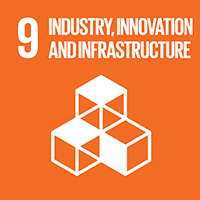 |
| Quality of the management and development of the capital infrastructure |
|
 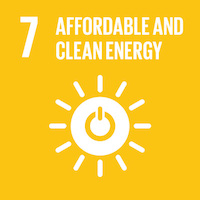 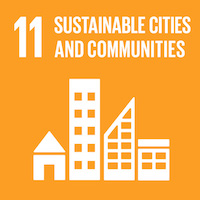 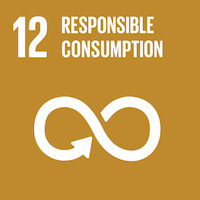  |
| Aviation Business Development |
|
 |
| Growth of the Non-Aviation Business |
|
 |
| Quality and digitalization of passenger services |
|
 |
| Efficiency and productivity |
|
 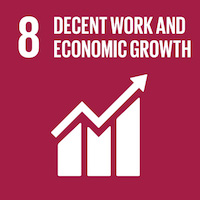  |
Update on the materiality matrix
On the basis of SEA Board discussions on January 25, 2018, the materiality matrix is undergoing a deep review, based on a broad process of stakeholder, shareholder and management engagement every three years. In the intervening years, the materiality matrix underwent a light review, based on exclusively logging and assessing internally significant aspects emerging from stakeholder interactions to determine how the ranking of the issues within the matrix might change.
